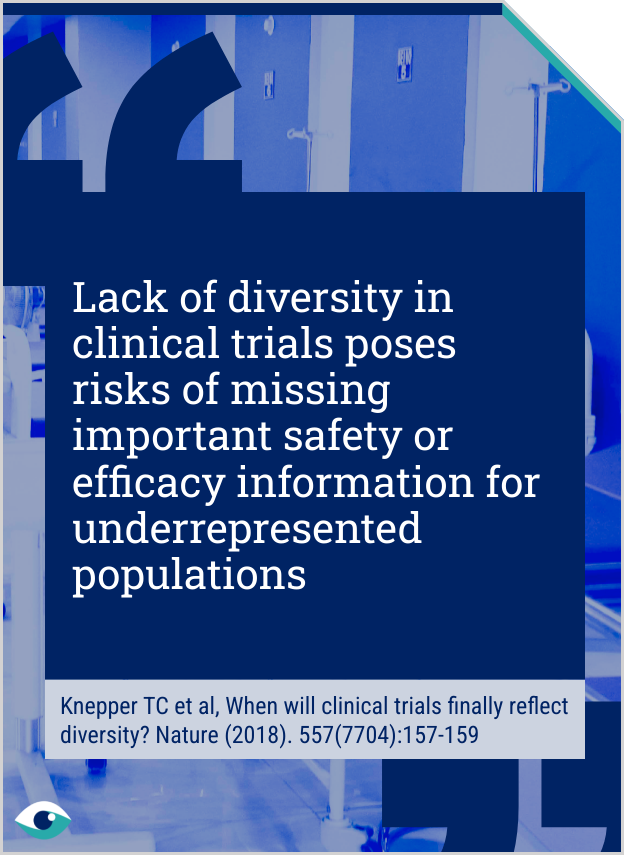The US Food and Drug Administration's (FDA's) recent recommendation for Diversity Action Plans in clinical trials aims to boost enrolment from underrepresented populations. This addresses a critical challenge in the health sector, where low participation rates from racial and ethnic minorities impede result “generalisability ”and perpetuate health disparities. The financial implications are significant, as inclusive practices can lead to more representative study populations. To tackle this, entities must adopt a multifaceted approach that includes community engagement, culturally sensitive recruitment and strategies to overcome participation barriers.

Diversity action plans: Reshaping clinical trial landscape
Engaging local communities: Building trust and awareness to boost diverse participation in clinical trials
People: Social & Governance impacts
Health (all industries)
AT A GLANCE
The FDA's 2024 Diversity Action Plan guidance is an opportunity to address underrepresentation in clinical trials.
Enhancing diversity can improve result “generalisability”, reduce health disparities and lead to more representative study populations.
In the long term, this approach can unlock new insights into drug efficacy and safety across diverse populations.
Diversity action planning
Comprehensive Diversity Action Plans are crucial for enhancing clinical trial diversity. Sponsors must establish specific enrollment targets categorised by demographic characteristics of the clinically relevant population. These plans should consider potential differential responses to medical products among demographic groups, including variations in effectiveness or safety based on pharmacokinetics or pharmacodynamics. In some cases, increasing the proportional enrolment of certain populations may be necessary.
Building community trust
Community involvement is integral in increasing participation in clinical trials. GSK reports efforts to engage community leaders and advocacy groups as part of a five-step plan to tackle diversity. Regarding community engagement, in particular, a bi-directional health information model is important given the significant racial and ethnic disparities in participant accrual. Some racial and ethnic groups are underrepresented in cancer prevention, early detection and treatment trials, despite having significantly higher mortality rates.

Overcoming trial barriers
Addressing barriers to clinical trial participation requires understanding the social determinants of health. These include economic instability, limited healthcare access, food insecurity and inadequate educational resources. The impact of geographical and cultural factors on recruitment is pronounced in the Global South. This is evidenced by the stark disparity in Africa, where despite bearing 25% of the global disease burden, the continent accounts for less than 3% of international clinical trials.

Data-driven diversity tracking
Data-driven monitoring for clinical trial diversity is essential for progress. This approach requires active real-time tracking of patient recruitment to meet diversity goals, along with transparent result reporting. These practices align with broader trends of integrated reporting in the healthcare sector. Leading firms are setting targets to monitor patient recruitment in real-time to improve the transparency of study results.
FURTHER READING
- Enhancing the Diversity of Clinical Trial Populations (NIMHD)
- Alzheimer’s Disease Neuroimaging Initiative-4 (ADNI-4) (Alzheimer’s & Dementia)
- Gaining Ground - 2024 (Global Health 50/50)
